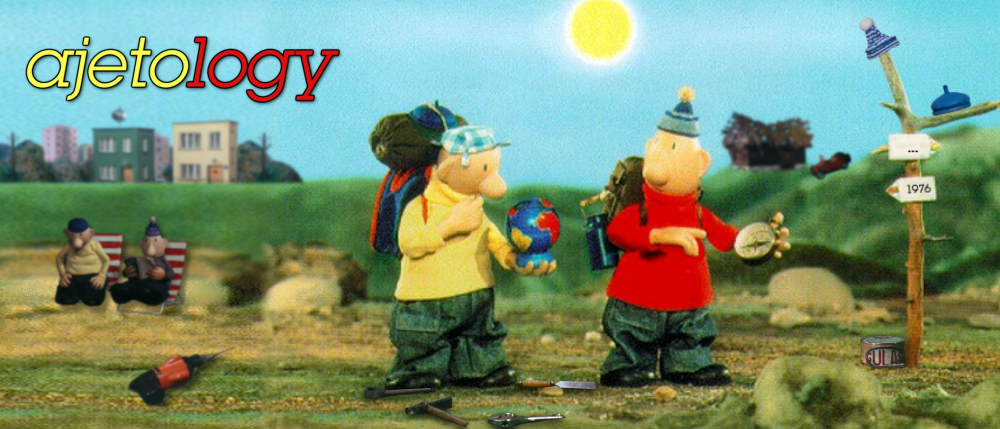When I was first thinking about making a blog about the series, one of the ideas rolling around in my head was to review every episode produced up to that point. That would have been a monumental task and one that I'm glad I abandoned. However, from time to time, I will take a closer look at some of the episodes and those posts will function as kind of a review. That explains the title of the post and here is the episode I'm talking about today. This time, the YouTube video was uploaded by the studio themselves, Patmat film:
Produced in 2011, it is the third episode from the Pat a Mat na venkově (Pat & Mat in the Countryside) series, which I haven't covered much yet. Even though I cannot find any mention of it at the moment, I remember reading an article about this episode premiering on the Zlín Film Festival. It is my favorite episode from that 13-episode series made over six years, mostly because of its absurdist plot. The plot is divided into three parts: 1) Pat & Mat enjoying their meal, 2) the two trying out ways to produce paper plates and 3) the two producting paper plates infinitely. Even though this is a longer episode (8:30 in length), only the second part lags a bit, while I like the tempo of the other two parts. As is the custom with episodes from Patmat, the first shot shows the setting where the action takes place.
This rustic setting was replicated in the 2009 Pat & Mat computer game. I like the general atmosphere of this series, which undoubtedly purposefully harkens back to the 1982-85 episodes set in the countryside as well. The opening of the episode is somewhat an anti-opening for the series; in it, everything goes well and the two handymen show skill and imagination in coming up with different paper tableware. They enjoy sausages, the local Kremžska mustard and some foreign ketchup with a funny label - strašně hot (terribly hot).
The core team that made this episode consisted of only four people from the Patmat film studio, which is in actuality 60 square meters located in an apartment house's basement in Hostivice near Prague. From right to left, Marek Beneš wrote and directed the episode, Jan Bouzek built the sets and most of the props, Jan Chvojka was the cameraman and Jan Smrčka the animator. Here they are in 2010 working on the previous episode, Vodovod:
Produced in 2011, it is the third episode from the Pat a Mat na venkově (Pat & Mat in the Countryside) series, which I haven't covered much yet. Even though I cannot find any mention of it at the moment, I remember reading an article about this episode premiering on the Zlín Film Festival. It is my favorite episode from that 13-episode series made over six years, mostly because of its absurdist plot. The plot is divided into three parts: 1) Pat & Mat enjoying their meal, 2) the two trying out ways to produce paper plates and 3) the two producting paper plates infinitely. Even though this is a longer episode (8:30 in length), only the second part lags a bit, while I like the tempo of the other two parts. As is the custom with episodes from Patmat, the first shot shows the setting where the action takes place.
This rustic setting was replicated in the 2009 Pat & Mat computer game. I like the general atmosphere of this series, which undoubtedly purposefully harkens back to the 1982-85 episodes set in the countryside as well. The opening of the episode is somewhat an anti-opening for the series; in it, everything goes well and the two handymen show skill and imagination in coming up with different paper tableware. They enjoy sausages, the local Kremžska mustard and some foreign ketchup with a funny label - strašně hot (terribly hot).
The core team that made this episode consisted of only four people from the Patmat film studio, which is in actuality 60 square meters located in an apartment house's basement in Hostivice near Prague. From right to left, Marek Beneš wrote and directed the episode, Jan Bouzek built the sets and most of the props, Jan Chvojka was the cameraman and Jan Smrčka the animator. Here they are in 2010 working on the previous episode, Vodovod:
 | |
|





















